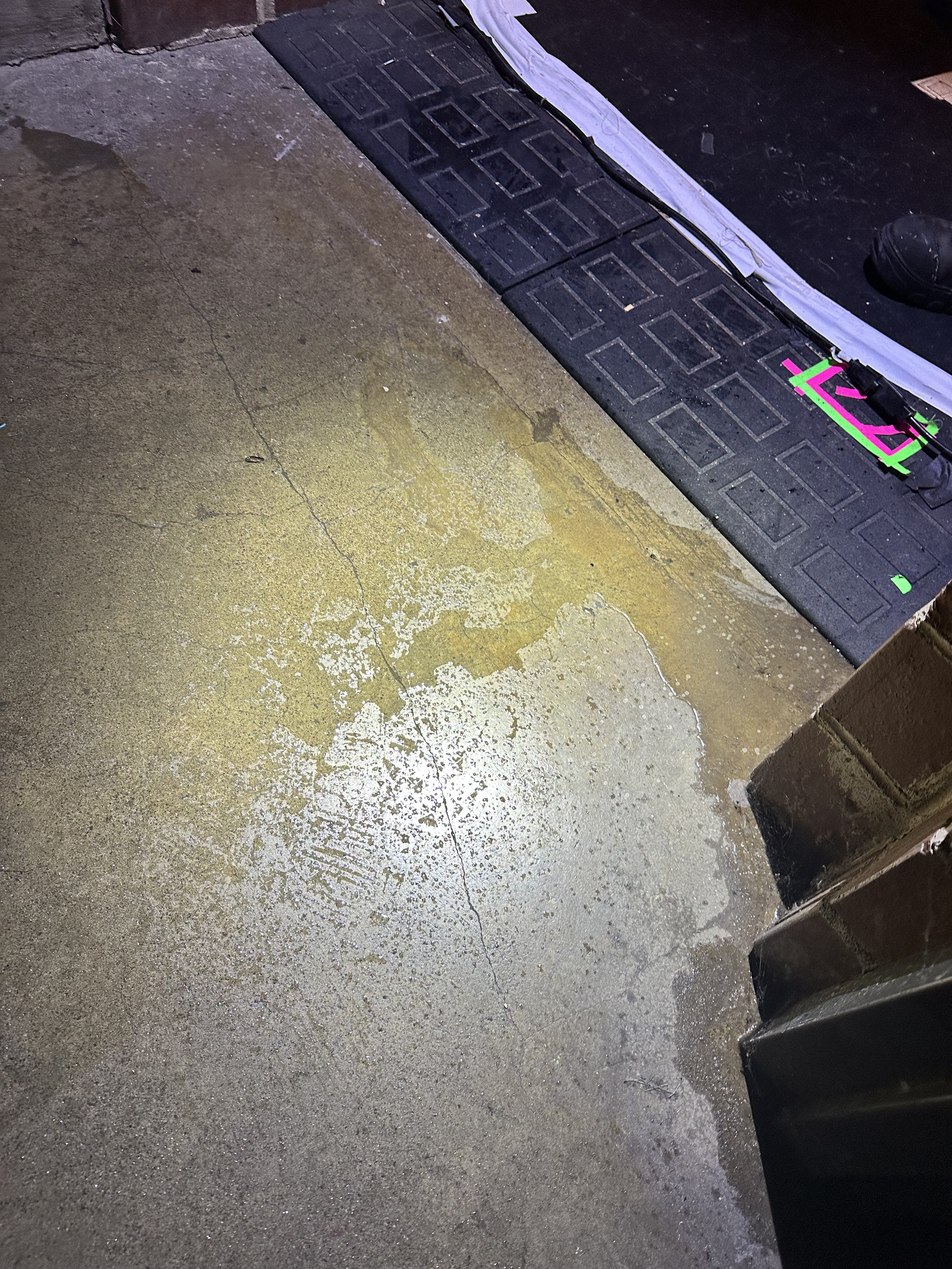Adapting on the Fly: A Stage Manager's Quick Thinking in the Face of a Flood
/As stage managers, there are times when we must make quick decisions that carry significant ramifications. Navigating these situations often becomes second nature with years of experience, but for younger stage managers, stepping into such high-stakes decisions can feel daunting.
With that in mind, I’d like to share a recent experience where I had to adjust blocking and scenic transitions for the safety of both the actors and crew.
This past fall, I was stage managing a production of The Importance of Being Earnest. On one performance day, I arrived at the theatre to find a large water leak cascading down the stairs into the green room on stage left. In this theatre, the dressing rooms and green room are located below stage level, with staircases leading up to stage left and stage right. The scenic design for the show included a backstage crossover behind a blackout curtain during Act 1, but no such curtain for Acts 2 and 3.
There had been severe thunderstorms in the area for the past few days, so it seemed likely that the leak was due to the storm’s impact, with visible water dripping from cracked sections of the ceiling.
The show was blocked with actors entering from both sides of the stage throughout the performance. Additionally, each large transition between acts involved crew members entering from stage left and exiting stage right, walking up and down the stairs to the green room. The crew would move quickly through these transitions due to the limited time in the intermissions.
As you can imagine, this posed a major safety concern. After notifying the appropriate building and custodial personnel, I began formulating a plan. My primary goal was to ensure the safety of the crew and cast—no one should have to walk through the water, particularly not at high speed.
We immediately began mopping up the water and placing fans to help dry the area. I decided that for the safety of the crew, they would not use the stairs to the green room. Instead, they would start in their original positions and walk back and forth across the stage as needed. The safety of the crew was more important to me than maintaining the original transition choreography. Additionally, since there was a blackout curtain in Act 1, I instructed the cast to use the stage right stairs from the green room and pass behind the blackout to make their stage left entrances. By the time Act 2 rolled around, I anticipated the stairs would be mostly dry.
I gathered the full cast and crew in the green room to go over the changes for the evening. I emphasized that safety was my top priority and instructed them not to take any actions that could lead to an accident. I made sure they understood the adjustments and encouraged them to reach out if they had any questions. I also assured them that I would remain in close contact throughout the performance. As I suspected, the stairs were mostly dry by Act 2, so I asked any actors that needed to use those stairs in Act 2 and Act 3 to allow for extra travel time between spaces and to tread carefully up the stairs.
Thankfully, the changes went smoothly, and no one was hurt. While the choreographed intermission transitions were affected, I would absolutely make the same decision again. The stairs dried completely over the following days, and we returned to our usual traffic patterns.
This experience is one I’ll never forget, and it’s become part of the collection of stories I share when mentoring other stage managers.
ACt 1
Act 2
Act 3
Cast & Crew Photo
Director: Mark “coach” mineart
scenic design & production photos: Isaac Ramsey
costume design: Mary Yaw Mcmullen
lighting design: Rae Lake








